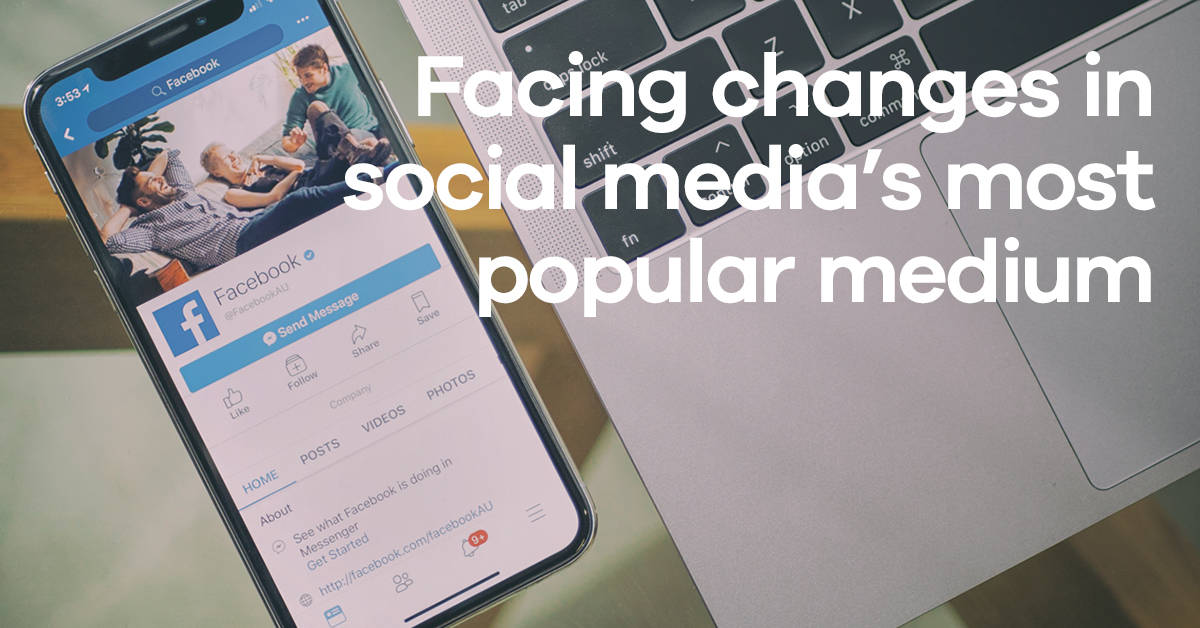What Facebook’s News Feed Change Means for Marketers

Typing “Facebook news feed changes” into Google less than two weeks after the news dropped yields 36 million results, including a story from Adweek calling it a “nuclear bomb.”
This is clearly a hotly debated topic on a subject that is full of uncertainty at this point. What we do know is that Facebook has said it will soon begin showing more posts from friends and less from publishers and brands in an effort to return to the network’s supposed roots. As Mark Zuckerberg wrote: “We built Facebook to help people stay connected and bring us closer together with the people that matter to us.”
Here are some thoughts on what brands should be thinking about as these changes roll out.
Diversify Platforms: Don’t Build on Rented Land
This saying has been used in reference to social media for some time now, but it’s never been more true. There are fewer and fewer social networks coming and going these days, but the ones that have been around for a while continue to prove time and again that they will make sudden, drastic changes for the benefit of their bottom lines and audiences. Make sure you’re not depending on any one of these platforms for business, but rather utilizing a variety of marketing tools (digital, email, website, video) across multiple platforms.
Publish Less, Higher-Quality Content
With organic reach plummeting over the last few years, this thought has been looming. It also may soon become reality that you need to boost everything you post for it to be seen. With the ad platform unlikely to change in the short-term (though less inventory and more demand should mean that rates will continue to increase further after 2017’s 54% increase in Facebook ad costs), consider boosts for anything that needs to drive referrals, signups, sales or conversions; organic for building community and encouraging conversation.
Go Live
Facebook says live video interactions are six times higher than regular video, so they will continue to push that in the algorithm. It’s important to be strategic with your live videos – not everything works live – but this is definitely something you should work in regularly to your Facebook content in 2018.
Focus on Facebook Groups
Facebook is really pushing Groups, and these are becoming valuable online places for discussion. Use Facebook Groups carefully since they are meant to be for organic conversation, not for marketers or salespeople. And since Group posts appear in your newsfeed, they’re subject to the same algorithmic limitations. But Groups are great to promoting your original thought leadership content, local (relevant) events and asking questions and learning more about your target audiences.
Encourage Discussion: Comments Are the No. 1 Interaction
One of the positives of this seismic social media change is at least Facebook tells you what they’re doing: “With this update, we will also prioritize posts that spark conversations and meaningful interactions between people…These are posts that inspire back-and-forth discussion in the comments and posts that you might want to share and react to – whether that’s a post from a friend seeking advice, a friend asking for recommendations for a trip, or a news article or video prompting lots of discussion.”
So, what does this mean? “Pages making posts that people generally don’t react to or comment on could see the biggest decreases in distribution. Pages whose posts prompt conversations between friends will see less of an effect.”
So, be relevant and timely and think about what your audience will want to discuss, comment on and share with their friends. It’s important to note that long comments weigh heavier, so Facebook really wants to see discussion and not “yes/no” answers.
It’s also important to note that Facebook wants discussion between users, not between users and brands.
Engage Influencers
There’s a reason 63% of marketers increased their influencer marketing budgets in 2017 (according to Bloglovin): influencers have built engaged audiences through relatable, authentic content. Brands should absolutely consider finding the right influencers for their social media marketing in 2018: not just to skirt Facebook’s recent news feed change but for all social and digital platforms.
Build and Cultivate Your Audience
It’s never been more important to really study your audience to understand what they’re most interested in. Put yourself in the shoes of people in your target audience and give thought to the type of content they would be searching for. Your social media content should be about your audience, not you.
Facebook’s “See First” and “Facebook Local” Features
These are two mobile Facebook tactics that could help, since we’re seeing typically at least 90% of Facebook activity coming from mobile for our campaigns. Direct your audience to consider your page under the “prioritize who to see first” under News Feed Preferences. Also, Facebook Local is great for local businesses promoting events and foot traffic.
Focus on Twitter for News
Is 2018 the year of Twitter’s comeback? A lot of analysts have been predicting that of late. The app is listed as “breaking news, politics, video” in the App Store, so Twitter has long been the best place for breaking news. Facebook purging publishers from its news feed should only help enforce Twitter’s position.
Avoid “Passive Engagement”
Facebook already announced late last year that their algorithm would punish engagement-baiting (things like asking for reactions and friend tags on posts), and this latest news coined the term “passive engagement,” referring mainly to video. Facebook doesn’t want people just scrolling through their feed. They want content that evokes emotion, propels you to comment, inspires you to share. It’s telling that for their Facebook Watch platform (TV competitor for original video content that is clearly the focus of their revenue strategy moving forward), they’re pushing publishers to focus on celebrities and personalities. As with anything, make sure to consider whether your content would make people stop and avoid the scroll.
